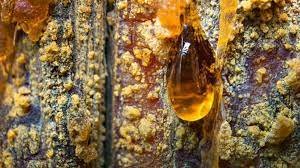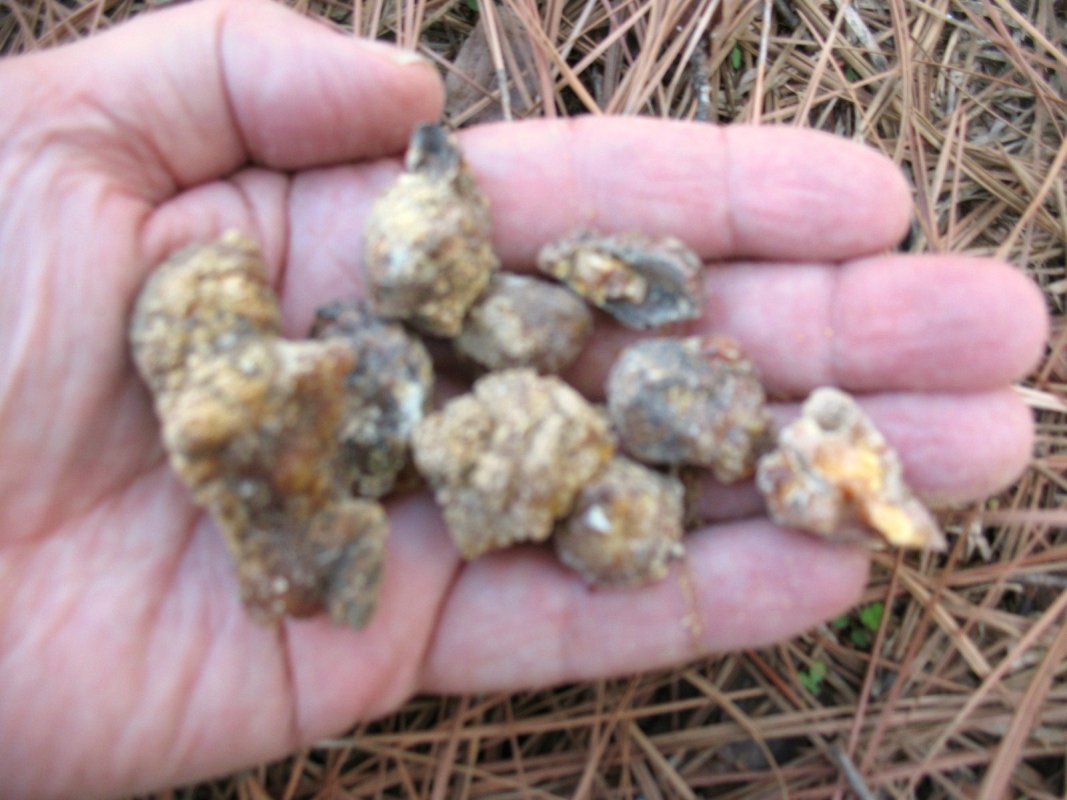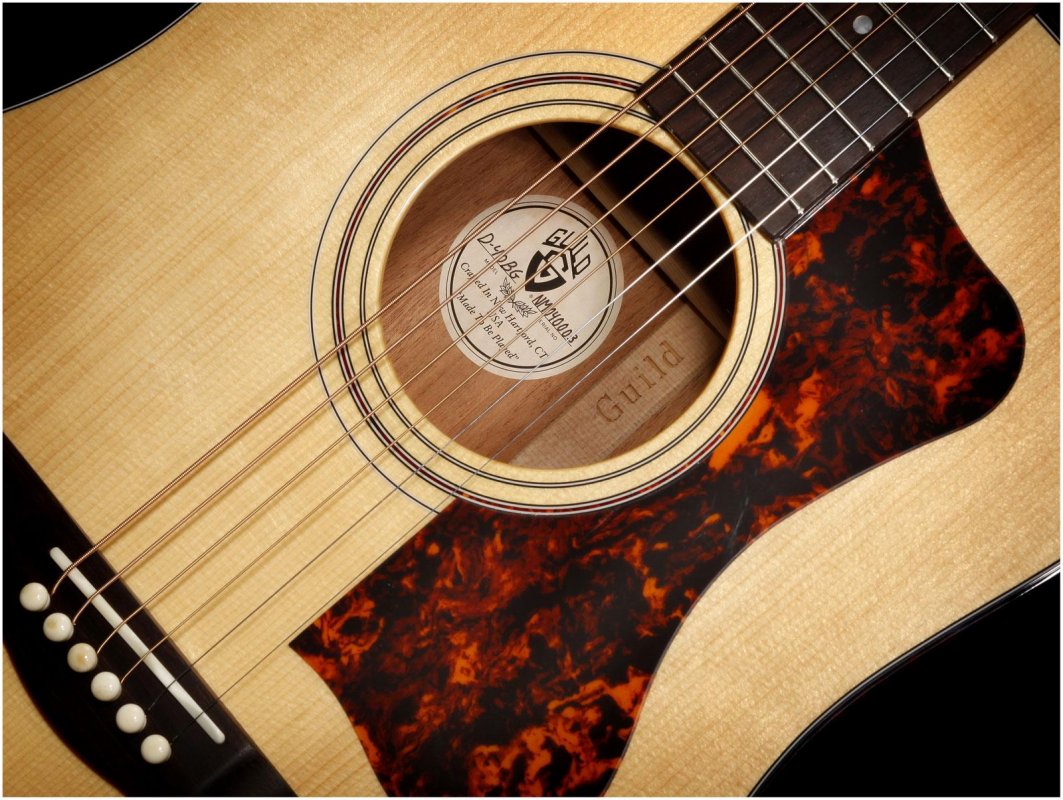So what happens to aged tonewoods? Does the chemical structure change with playing?
You are using an out of date browser. It may not display this or other websites correctly.
You should upgrade or use an alternative browser.
You should upgrade or use an alternative browser.
Acoustic tonewood aging
- Thread starter dreadnut
- Start date
davismanLV
Venerated Member
- Joined
- Mar 24, 2011
- Messages
- 19,326
- Reaction score
- 12,107
- Location
- U.S.A. : Nevada : Las Vegas
- Guild Total
- 2
Google can be your friend.

 midlifeguitar.com
midlifeguitar.com

Why Acoustic Guitars Sound Better With Age | Midlife Guitar
I've long been fascinated with vintage acoustic guitars and after 25 years of playing, I still get goosebumps when I'm in the presence of a…
Guildedagain
Enlightened Member
Yes, just like us, they get better with age, and then they get to a point where there's nothing left.
Charlie Bernstein
Senior Member
Good question. I always just figured the resins slowly evaporate. Now I'll read Davis's article and find out what really happens.
I have noticed aged tonewoods seem to be lighter and that is opposite of most of us - as we age we gain weight--speaking from personal experience.
Charlie Bernstein
Senior Member
You're right, I was slowly expanding for a long time.I have noticed aged tonewoods seem to be lighter and that is opposite of most of us - as we age we gain weight--speaking from personal experience.
But since the pandemic started I've gone down to almost where I was thirty years ago. Avoiding restaurants and dinner parties seems to agree with me.
Very same eating habits as you and have eaten healthier these Covid years than ever before. And to just get out, started walking two miles a day around a city lake which has helped, also.You're right, I was slowly expanding for a long time.
But since the pandemic started I've gone down to almost where I was thirty years ago. Avoiding restaurants and dinner parties seems to agree with me.
Br1ck
Senior Member
I just had my annual blood tests. I was worried about my sodium levels because during COVID I've had quite the pistachio nut habit. It has never been lower. No processed or restaurant food has to be the reason. I'm borderline diabetic, and when I caved and bought a fast food burger and fries my blood sugars hit the roof. It sucks for sure.
Taylor Martin Guild
Senior Member
The farther away from being a tree the better.
West R Lee
Venerated Member
This is precisely why I bought a Tonerite. I've only used it on my D25, and to me, it's made a difference. The only drawback to a Tonerite is that they're pretty expensive for just a few applications. I think one could eventually make money by renting one out. I actually bought it to use on a new guitar that might be coming next week, I think it's made my D25 more resonant, but there are many non believers out there. I'm looking forward to trying it on a brand new guitar.
West
West
wileypickett
Senior Member
I’m not a non-believer, I just wasn’t able to discern a difference on the guitars I used it on.
But as was noted, I only tried it on old guitars, which already have a lot of miles on them and may have broken in as much as they’re going to.
Their being more effective on new guitars makes sense, intuitively.
(Someday I’ll get a new guitar and give it a shot!)
Let us know what you think on the new one.
But as was noted, I only tried it on old guitars, which already have a lot of miles on them and may have broken in as much as they’re going to.
Their being more effective on new guitars makes sense, intuitively.
(Someday I’ll get a new guitar and give it a shot!)
Let us know what you think on the new one.
scottferreter
Junior Member
- Joined
- Dec 12, 2021
- Messages
- 45
- Reaction score
- 56
- Guild Total
- 1
My understanding is that some of the water leaves and the sugars crystallize and become harder, which makes sense as to why my ears always hear aged tonewoods as having more "space" or "breath." New guitars are like a small speaker, working hard to make sound, and old guitars sound like a big speaker effortlessly reproducing any given sound.
Guildedagain
Enlightened Member
Wood dries out more over time, nitro finish crystalizes, crazes, releasing it's hold on the top.
Read the article, premise is flawed from the start.
"But other than the extreme price fluctuation between a 2019 Gibson J-45 and the 1942 model that it replicates, is there really any difference in the sound quality? They are both made of the same stuff and crafted by luthiers using the same time-honored techniques"
Yeah, they are made from the same stuff, wood, but that's like comparing a glue lam to a piece of pre war Adi Spruce.
It is not the same stuff.
These quotes are from that 1967 Gibson factory video that was posting here and there earlier this spring:
"Where does the distinctive sound of a guitar begin?"
"The sound of good guitars begins with the finest of woods, slowly aged, like vintage wine."
"Only a fraction of the world's finest wood is good enough."
The woods being used now are nowhere near the same grade, or as aged.
So right off the bat, without a bit of aging, the older guitars were made of better materials, sounded fabulous from the start.
Read the article, premise is flawed from the start.
"But other than the extreme price fluctuation between a 2019 Gibson J-45 and the 1942 model that it replicates, is there really any difference in the sound quality? They are both made of the same stuff and crafted by luthiers using the same time-honored techniques"
Yeah, they are made from the same stuff, wood, but that's like comparing a glue lam to a piece of pre war Adi Spruce.
It is not the same stuff.
These quotes are from that 1967 Gibson factory video that was posting here and there earlier this spring:
"Where does the distinctive sound of a guitar begin?"
"The sound of good guitars begins with the finest of woods, slowly aged, like vintage wine."
"Only a fraction of the world's finest wood is good enough."
The woods being used now are nowhere near the same grade, or as aged.
So right off the bat, without a bit of aging, the older guitars were made of better materials, sounded fabulous from the start.
Last edited:
Neal
Senior Member
When I look at the spruce and mahogany my old guitars are made from, the grain is noticeably tighter than on the modern guitars that have passed through my hands. They‘re also much lighter than their modern reproductions.
PreacherBob
Member
The dark lines in guitar tops are in fact the sap or resin rings, same as the age rings in the tree from year to year. Sap always move behind the bark, carrying nutrients up and down the tree. So the dark lines are the sap rings, with the pulp in between. Like on a tree, sap weeps and it takes a long time to get hard or crystalize. Manufacturers started “torrifying“ or heat top panels to get those sap lines to crystalize prematurely. I did one top I have, yes it makes a difference. Wide lighter colored pulp lines on your top between dark lines results from rainy seasons. You can look at your top and see the abnormal rainy seasons that tree experienced. Adirondack spruce has a very wide grain, because of the wetlands in the Adirondack mountains upstate New York. Like my D40 Bluegrass Jubilee Adirondack top. So when that sap in your top dark lines changes from sticky sap to harder rock hard resin over time, your top will greatly improve. I use to knock those rock hard sap knots off the pines when I was little to skip in the pond. The gooey ones just made a mess for my mom to clean off me




Adirondack Spruce[Red Spruce] grown in Upstate New York in the Adirondack Mountains, as well as elsewhere in the Appalachians. Before World War II, Adirondack Spruce was the main type of wood that pretty much defined the guitars of that era. With so many trees having been cut down to make guitars and other products, only recently has Adirondack Spruce made a comeback as a new generation of trees have matured.
Today’s Adirondack Spruce tend to be wide-grained and somewhat irregular in both their color and grain patterns. What they lack in “looks,” though, they make up for in tonal quality. Some say the soundboards from this specie are able to offer a higher ceiling for volume And that Adirondack Spruce can be played loudly without losing clarity, and therefore it’s found on custom-made, specialty guitars. For aggressive players who want a certain sweetness in their notes, Adirondack Spruce is a fine choice.




Adirondack Spruce[Red Spruce] grown in Upstate New York in the Adirondack Mountains, as well as elsewhere in the Appalachians. Before World War II, Adirondack Spruce was the main type of wood that pretty much defined the guitars of that era. With so many trees having been cut down to make guitars and other products, only recently has Adirondack Spruce made a comeback as a new generation of trees have matured.
Today’s Adirondack Spruce tend to be wide-grained and somewhat irregular in both their color and grain patterns. What they lack in “looks,” though, they make up for in tonal quality. Some say the soundboards from this specie are able to offer a higher ceiling for volume And that Adirondack Spruce can be played loudly without losing clarity, and therefore it’s found on custom-made, specialty guitars. For aggressive players who want a certain sweetness in their notes, Adirondack Spruce is a fine choice.
Most Adirondack spruce DOES NOT come from upstate New York or the Appalacian Mountains any more. A lot of it comes from other locations, like Labrador, despite the name. The upstate New York/Appalachian Adirondack spruce was cut down (to extinction) during World War II, where it was used to make troop transport gliders for the war in Europe. It allowed troops to land behind enemy lines without needing to have paratroop training. The gliders were big, so used a lot of spruce for each glider, and the Adirondack/Appalacian spruce was closest to the factories that were making the gliders.
Guildedagain
Enlightened Member
Was the Spruce Goose made of Adi, I wonder?
Makes you wonder how much of that Adi is left in Europe from the gliders, what wasn't used for firewood?
They estimate there's millions of board feet of old growth timber sunk in lakes and the oceans around, with a value around $1.5b if I remember right.
Me, I just want enough of a chunk of mast from a Viking ship to make a Telecaster.
Makes you wonder how much of that Adi is left in Europe from the gliders, what wasn't used for firewood?
They estimate there's millions of board feet of old growth timber sunk in lakes and the oceans around, with a value around $1.5b if I remember right.
Me, I just want enough of a chunk of mast from a Viking ship to make a Telecaster.
West R Lee
Venerated Member
And all of this pretty much explains why baked and torrified top have become so popular. I would agree with all of the above, except for a bit of an equalizer. Yes, the woods might not be the quality they were in say the late 30's and just before WWII, but technology used in lutherie had evolved enormously in the past 80 years. I'd say guitar makers clearly have understood all of this, and it's precisely why some offer these treatments to enhance the sound qualities of the various woods. Also, I think not only does past experience of the builders make a difference, but the store of knowledge of so many builders over the years has been shared with those who build now.
On a related note, I also took my CJ off the Tone-rite last night after 4 continuous days of running. It has indeed made a difference on that one, which was a virtually new '13 CJ when I bought it in '18. It was almost unplayed when I got it, and that guitar has a German spruce top. I also think it helped my new guitar with the Adi top quite a bit.
Here's the thing though. When you read reviews on Tone-rite, folks discuss the wear it puts on strings, understandable after 4 days of 24 hour vibration, so you run the thing on old strings, or that need changing. After you remove it, the first thing I did was change strings. So I'll admit that the sound is indeed enhanced with a new set of strings right off the bat, but I think it's more than that. I think it works well on some guitars and some woods, and not so well on others.
I didn't really notice a big change with my 43 year old D25, but I think it made a slight enhancement on that one, but on a brand new 2022 Adirondack topped guitar, or on a guitar that has been a closet queen and rarely played, I think the Tone-rite helps quite a bit.
I'm going to run it on the DV72 next.........that one is only 28 years old. We'll see. I'm not expecting much with that one.
To summarize, and just my opinion obviously, I think it helps guitars that are new, or rarely played. I don't think they would enhance a 40 year old guitar much at all really. I also think it helps more with some of the more resonant top woods. So would I run the thing on a new Adi topped guitar? In a heartbeat. Also on anything that doesn't get much play.
There you have it, my completely unscientific assessment of the Tone-rite. Take my opinion and about $10 to Starbucks, and you might get a cup of coffee.
West
On a related note, I also took my CJ off the Tone-rite last night after 4 continuous days of running. It has indeed made a difference on that one, which was a virtually new '13 CJ when I bought it in '18. It was almost unplayed when I got it, and that guitar has a German spruce top. I also think it helped my new guitar with the Adi top quite a bit.
Here's the thing though. When you read reviews on Tone-rite, folks discuss the wear it puts on strings, understandable after 4 days of 24 hour vibration, so you run the thing on old strings, or that need changing. After you remove it, the first thing I did was change strings. So I'll admit that the sound is indeed enhanced with a new set of strings right off the bat, but I think it's more than that. I think it works well on some guitars and some woods, and not so well on others.
I didn't really notice a big change with my 43 year old D25, but I think it made a slight enhancement on that one, but on a brand new 2022 Adirondack topped guitar, or on a guitar that has been a closet queen and rarely played, I think the Tone-rite helps quite a bit.
I'm going to run it on the DV72 next.........that one is only 28 years old. We'll see. I'm not expecting much with that one.
To summarize, and just my opinion obviously, I think it helps guitars that are new, or rarely played. I don't think they would enhance a 40 year old guitar much at all really. I also think it helps more with some of the more resonant top woods. So would I run the thing on a new Adi topped guitar? In a heartbeat. Also on anything that doesn't get much play.
There you have it, my completely unscientific assessment of the Tone-rite. Take my opinion and about $10 to Starbucks, and you might get a cup of coffee.
West
Last edited:
PreacherBob
Member
Wow West I think that’s a great assessment of the tone right verses, “ yeah it works pretty good” or “ I really couldn’t tell a difference “. I joined LTG a few months ago to seek answers for a 2008 Tacoma D40 BGJ. Wasn’t sure if $1500 was fair. Great encouragement so I purchased it. I didn’t even know it’s was NOS. Previous owner of a shop called “Pick’n & Grin’n” in Tennessee who retired, closed shop years earlier just recently selling off old stored stock. He said it’ll take some playing to get that Adi top to open up. Well I had know idea what he meant, so I joined and asked you guys. I knew about the torrification process, but not “playing “. Vibration maybe does something? I did some research on Adirondack which is where I got those last two paragraph quotes under the photos, from a “guitar wood” specialist, if there is such a thing. I did find out that Adi tops are a little thicker than Sitka or Engleman, because it does not have the same strength value as those two, and my digital micrometer verified that. Im still not sure how “playing a lot” changes things, but I strapped a set of Martin mediums on and away we went. Every day, 8 weeks, 2 hours a day, thick pick like y’all and everything! I mean I windmilled a strum on that guitar like Elvis. It was just like an older post I came across. The man said it was like when his wife’s water broke, it was so obvious went the top let go. And there it was, it did happen, though I would never believed that would be how it comes about. So without even trying a Tonerite, I’m at least a firm believer in “the more that top vibrates, the better it will sound”. I’m about to complete my ”Centennial Snakewood OM” guitar. I may buy a Tonerite for that one, not wanting to abuse it with heavy strumming. It’s a very light build. A unique light red example Amazon rosewood on back and sides, Martin OM mahogany neck and ebony fretboard and bridge, top and braces made from reclaimed wood from the red spruce sound board of a 1906 piano. Waverly 100 year anniversary snakewood Waverly gold tuners, and bridge pins collection. I’m making the nut and saddle from old snakewood as well, being 2 spots harder than African ebony on the Jenga list, I’m hoping it will sound suitable, I’ve done wood, brass, and stainless steel before. Thanks again WestAnd all of this pretty much explains why baked and torrified top have become so popular. I would agree with all of the above, except for a bit of an equalizer. Yes, the woods might not be the quality they were in say the late 30's and just before WWII, but technology used in lutherie had evolved enormously in the past 80 years. I'd say guitar makers clearly have understood all of this, and it's precisely why some offer these treatments to enhance the sound qualities of the various woods. Also, I think not only does past experience of the builders make a difference, but the store of knowledge of so many builders over the years has been shared with those who build now.
On a related note, I also took my CJ off the Tone-rite last night after 4 continuous days of running. It has indeed made a difference on that one, which was a virtually new '13 CJ when I bought it in '18. It was almost unplayed when I got it, and that guitar has a German spruce top. I also think it helped my new guitar with the Adi top quite a bit.
Here's the thing though. When you read reviews on Tone-rite, folks discuss the wear it puts on strings, understandable after 4 days of 24 hour vibration, so you run the thing on old strings, or that need changing. After you remove it, the first thing I did was change strings. So I'll admit that the sound is indeed enhanced with a new set of strings right off the bat, but I think it's more than that. I think it works well on some guitars and some woods, and not so well on others.
I didn't really notice a big change with my 43 year old D25, but I think it made a slight enhancement on that one, but on a brand new 2022 Adirondack topped guitar, or on a guitar that has been a closet queen and rarely played, I think the Tone-rite helps quite a bit.
I'm going to run it on the DV72 next.........that one is only 28 years old. We'll see. I'm not expecting much with that one.
To summarize, and just my opinion obviously, I think it helps guitars that are new, or rarely played. I don't think they would enhance a 40 year old guitar much at all really. I also think it helps more with some of the more resonant top woods. So would I run the thing on a new Adi topped guitar? In a heartbeat. Also on anything that doesn't get much play.
There you have it, my completely unscientific assessment of the Tone-rite. Take my opinion and about $10 to Starbucks, and you might get a cup of coffee.
West
PreacherBob
Member
Interesting thought! I tried searching “sinker Adirondack“ to no avail. But I just quoted West’s post, and mentioned the OM I’m finishing that the starting luthier reclaimed the red spruce sound board from a 1906 piano for the top and braces. But I’m not not sure how thick the sound boards are to make a telecaster bodyWas the Spruce Goose made of Adi, I wonder?
Makes you wonder how much of that Adi is left in Europe from the gliders, what wasn't used for firewood?
They estimate there's millions of board feet of old growth timber sunk in lakes and the oceans around, with a value around $1.5b if I remember right.
Me, I just want enough of a chunk of mast from a Viking ship to make a Telecaster.